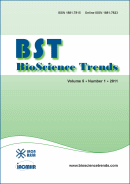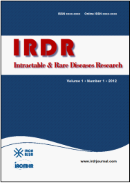Drug Discov Ther. 2016;10(3):177-180. (DOI: 10.5582/ddt.2016.01036)
Three episodes of non-arteritic posterior ischemic optic neuropathy in the same patient treated with intravenous prostaglandin E1.
Steigerwalt Jr. RD, Pascarella A, De Angelis M, Grimaldi G, Nebbioso M
Non-arteritic posterior ischemic optic neuropathy (NA-PION) is a disorder involving reduced blood flow to the retrobulbar portion of the optic nerve. This disorder usually develops acutely, and research has suggested that high-dose steroid therapy soon after the onset of visual loss can result in significant visual improvement. This treatment, however, is not universally successful. The addition of a potent vasodilator could help to restore ocular blood flow. This case report describes the use of prostaglandin E1 (PGE1), a powerful vasodilator of the microcirculation, to treat three separate episodes of NA-PION over five years in the same patient. A 68-year-old white male was first seen in June 2009 with NA-PION in the left eye, and the condition was treated with steroids and PGE1. The patient had a subsequent episode in July 2010 that was treated with steroids and PGE1 and another in May 2014 that was treated with PGE1 alone. Visual acuity improved from 4/10 to 11/10 in 2009, from 4/10 to 11/10 in 2010, and from 5/10 to 10/10 in 2014. No complications due to the use of PGE1 were noted. PGE1 should be considered as a treatment for NA-PION to immediately restore blood flow and potentially improve vision.







